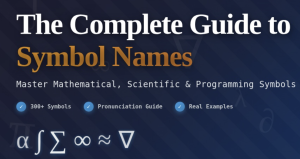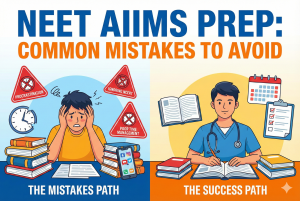Introduction
Ever wondered why some students remember everything after class while others forget half of it by the next day? The secret lies in how they take notes. Effective note-taking strategies don’t just capture information—they help your brain understand, organise, and retain it for longer.
If you’re tired of forgetting what you study, this guide will teach you scientifically proven note-taking strategies that actually improve memory and make learning more enjoyable.
Why Note-Taking Strategies Help Improve Memory
Taking notes is more than a classroom habit — it’s an active mental exercise. When you take notes, you:
-
Process information instead of just hearing it.
-
Organise knowledge logically.
-
Trigger your brain’s memory systems.
Research from Princeton University and UCLA shows that students who write notes by hand remember more because handwriting forces the brain to summarise and rephrase information. The act of thinking while writing makes your brain store facts more deeply.
So, if you want to improve your memory, start by improving how you take notes.
The Best Note-Taking Strategies That Improve Memory
Here are the most effective, science-backed techniques you can use right away.
1. The Cornell Note-Taking System
The Cornell Method is a structured way to organise and review your notes. Divide your page into three parts:
-
Left Column: Keywords or questions.
-
Right Column: Main lecture notes.
-
Bottom Section: A short summary.
This method turns your notes into a self-study tool. When you revisit them, cover the right side and use the left column to quiz yourself.
Why it works: It encourages active recall and helps you summarise key ideas in your own words — a proven way to strengthen memory.
Pro Tip: Review your Cornell notes within 24 hours. Summarising soon after learning cements the information in your long-term memory.
2. The Mind Mapping Method
If you’re a visual learner, mind mapping is your best friend. Start with a central idea and draw branches for related topics. Each branch can have smaller sub-branches for facts, examples, or steps.
Why it works: Mind maps mirror how the brain naturally stores information — in networks and connections. Seeing the “big picture” helps you recall details more easily.
Use it for subjects like biology, history, or geography, where concepts are interconnected.
3. The Outline Method
This is a classic strategy that organises notes in a simple hierarchy:
-
Main topic
-
Subtopic
-
Key point
-
-
Example:
Topic: The Water Cycle
-
Evaporation
-
Condensation
-
Precipitation
-
Collection
Why it works: The outline method gives your notes a clear structure. It’s perfect for lectures or chapters that follow a logical flow.
Tip: Use short bullet points, not full sentences, to make reviewing faster.
4. The Charting Method
When you have to compare facts, timelines, or categories, charts are ideal.
| Concept | Description | Example | Importance |
|---|---|---|---|
| Photosynthesis | Process by which plants make food | Glucose formation in leaves | Provides oxygen and energy |
Why it works: The brain loves patterns. Charts make it easy to review data visually and remember key differences or similarities at a glance.
5. The Hybrid Technique: Mind Map + Summary
This approach blends creativity with logic. First, make a colourful mind map to understand the topic visually. Then, write a short summary paragraph to reinforce understanding.
Why it works: It uses both sides of your brain — the visual and analytical — for stronger memory formation.
The Feynman Technique: Learn by Teaching
Ever tried explaining something to a friend and realised you understood it better afterward? That’s the Feynman Technique in action.
Steps:
-
Write the concept in simple terms.
-
Explain it as if teaching a 10-year-old.
-
Identify gaps in your explanation.
-
Go back and fill those gaps.
Why it works: Simplifying ideas forces you to understand them deeply. The more clearly you can explain something, the better you’ll remember it.
Add Visuals and Color
Your brain processes visuals 60,000 times faster than text. Use that to your advantage!
-
Highlight only important keywords (not entire sentences).
-
Use different colours for headings, definitions, and examples.
-
Add doodles, arrows, or diagrams to show connections.
Studies show that colour-coded notes improve focus and recall because they create visual “anchors” for your brain to hold onto.
Review Smartly Using Spaced Repetition
Writing notes isn’t enough — reviewing them regularly is what locks the information in. Follow this pattern:
-
Review after 1 day → short-term reinforcement.
-
Review after 1 week → transfer to long-term memory.
-
Review after 1 month → permanent recall.
When you review, test yourself instead of rereading. Cover your notes and try recalling key points aloud — it strengthens neural connections and boosts memory.
Handwritten vs Digital Notes
Both handwritten and digital note-taking have their strengths.
| Method | Benefits | Best For |
|---|---|---|
| Handwritten | Improves focus and comprehension | Theory-heavy subjects |
| Digital (Notion, OneNote, Evernote) | Easy to edit, search, and organize | Data-heavy subjects |
Tip: If you use digital tools, write in your own words — don’t copy-paste. Summarising is what makes your brain remember.
Bonus Tip: Turn Notes into Flashcards or Quizzes
After completing your notes, turn them into mini quizzes. Write questions in the margins or use apps like Quizlet to create flashcards.
Example:
Note: “Mitochondria – powerhouse of the cell.”
Flashcard question: What is the powerhouse of the cell?
This method transforms your notes into active recall tools — one of the best ways to improve long-term memory.
Quick Note-Taking Checklist
Before you close your notebook, make sure you’ve:
✔ Written in your own words
✔ Highlighted only key ideas
✔ Added diagrams or visuals
✔ Reviewed notes within 24 hours
✔ Summarized main takeaways
If you’ve done all this, congratulations — you’re using note-taking strategies that genuinely improve memory!
Conclusion
Effective note-taking strategies are about understanding, not copying. The best notes are active, colourful, and organised in a way your brain loves. Whether you prefer Cornell notes, mind maps, or outlines, the key is to think while you write.
So next time you take notes, don’t just fill pages. Make connections, draw visuals, and summarise. Your brain will thank you when you’re recalling everything perfectly during exams.
Master the art of note-taking — and you’ll master the art of remembering.
Also Read: Sleep Schedule: How to Fix It Before Exams Using Sleep Science







